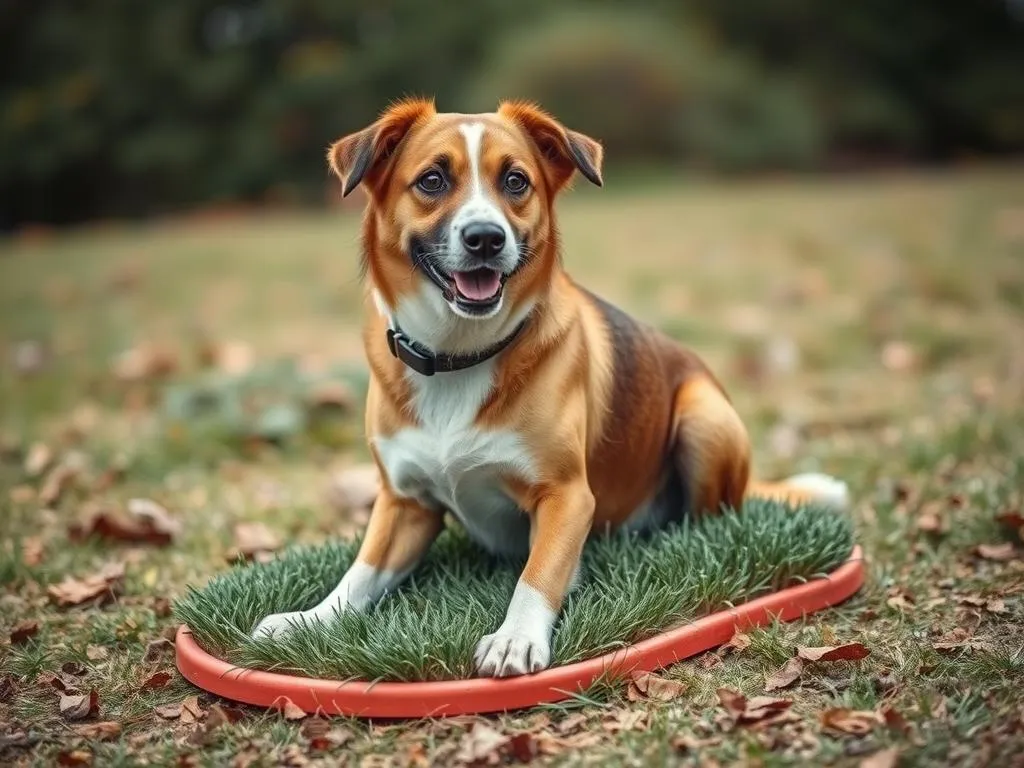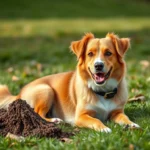
Introduction
Potty training is an essential aspect of responsible dog ownership. It not only helps maintain a clean home but also fosters a healthy relationship between you and your furry friend. One innovative solution that has gained popularity in recent years is the use of grass potty pads. These pads offer a more natural feel for dogs, mimicking the experience of going outdoors. In this article, we will explore how to train a dog to use grass potty pads, emphasizing the importance of consistency and patience throughout the training process. We’ll cover everything from understanding grass potty pads to troubleshooting common issues, ensuring you have the tools necessary for successful training.
Understanding Grass Potty Pads
What are Grass Potty Pads?
Grass potty pads are specially designed mats made from real grass or synthetic materials that resemble grass. They provide a designated area for your dog to relieve themselves indoors. Unlike traditional indoor potty solutions like newspapers or synthetic pads, grass potty pads offer a more realistic texture that many dogs find appealing. This natural feel can help ease the transition for dogs that are used to going outdoors.
Benefits of Using Grass Potty Pads
There are several advantages to using grass potty pads:
- Natural Feel: Grass potty pads mimic outdoor grass, making them more inviting for dogs.
- Environmental Benefits: Many grass potty pads are made from sustainable materials, reducing your carbon footprint.
- Easier Cleaning: Compared to newspapers or synthetic pads that need frequent changing, grass potty pads can be cleaned and reused, making maintenance simpler.
Considerations Before Starting Training
Before you begin training your dog to use grass potty pads, consider the following:
- Dog’s Age and Temperament: Puppies and older dogs may have different learning curves, so assess your dog’s individual needs.
- Living Situation: Your environment (apartment vs. house) may influence the location and implementation of the potty pads.
- Placement: Ensure the potty pad is placed in a quiet, accessible area where your dog feels comfortable.
Preparing for Training
Gathering Necessary Supplies
To effectively train your dog to use grass potty pads, you’ll need a few essential items:
- Grass Potty Pads: Choose high-quality pads that suit your dog’s size and needs.
- Treats: Use small, tasty treats as rewards for successful potty breaks.
- Leash: A leash is useful for guiding your dog to the potty pad.
- Cleaning Supplies: Have enzymatic cleaners on hand to manage accidents.
Setting Up a Designated Potty Area
Creating a dedicated potty area is vital for effective training. Here’s how to set it up:
- Choose a Location: Select a quiet corner of your home with good ventilation.
- Make It Inviting: Use familiar scents, such as your dog’s bedding or toys, to make the area feel safe and comfortable.
Establishing a Routine
Establishing a consistent routine is crucial in potty training. Consider the following tips:
- Regular Meal Times: Feed your dog at the same times each day to regulate their bathroom schedule.
- Potty Breaks: Take your dog to the potty pad frequently, especially after meals, playtime, and waking up.
Training Techniques
Positive Reinforcement
Positive reinforcement is an effective training method that encourages desired behaviors. Here’s how to implement it:
- Types of Rewards: Use treats, praise, or playtime as rewards when your dog successfully uses the potty pad. The key is to be enthusiastic to reinforce the behavior positively.
Step-by-Step Training Process
Introduction to the Potty Pad
To familiarize your dog with the potty pad:
- Gentle Introduction: Allow your dog to sniff and explore the potty pad without pressure. This helps them understand that it’s a place for relief.
Encouraging Use of the Pad
Watch for signs that your dog needs to go, such as whining or pacing. When you notice these behaviors:
- Guide Them: Calmly lead your dog to the potty pad. Use a command like “Go potty” to associate the phrase with the action.
Immediate Rewards After Use
Reward your dog immediately after they use the pad:
- Verbal Praise: Use an excited tone to praise your dog.
- Physical Affection: Pet your dog to reinforce their good behavior and strengthen your bond.
Troubleshooting Common Issues
Accidents and Setbacks
Accidents are a normal part of the training process. Here’s how to handle them:
- Stay Calm: Never punish your dog for accidents. Instead, clean the area thoroughly using an enzymatic cleaner to eliminate odors.
- Assess the Situation: Identify patterns to understand why accidents are occurring (e.g., too much freedom in the house).
Refusal to Use the Potty Pad
If your dog refuses to use the potty pad, consider these points:
- Check for Stress: Ensure that your dog feels comfortable in the designated area. Stressors may include noise, other pets, or unfamiliar scents.
- Relocate the Pad: If your dog seems hesitant, try moving the potty pad to a different location that feels more secure.
Maintaining Success
Transitioning from Potty Pads to Outdoor Pottying
Once your dog consistently uses grass potty pads, you may want to transition them to outdoor pottying:
- Signs of Readiness: Look for signs that your dog is ready to go outside, such as showing interest in the door or whining when they need to go.
- Gradual Movement: Slowly move the potty pad closer to the door to help your dog associate potty time with being outside.
Continuing Positive Reinforcement
As you transition to outdoor pottying, maintain the positive reinforcement strategy:
- Adapt Your Rewards: Use treats and praise to encourage outdoor pottying, gradually reducing the frequency of rewards as your dog becomes accustomed to the new routine.
Regular Evaluation of Training Progress
Assess your training effectiveness regularly:
- Observe Behavior: Monitor your dog’s potty habits and adjust your training methods as needed. If your dog is struggling, consider revisiting earlier steps in the training process.
Frequently Asked Questions (FAQs)
How long does it take to train a dog to use grass potty pads?
The duration of training varies by dog and their age, but with consistency, many dogs can learn to use grass potty pads within a few weeks.
What if my dog continues to have accidents?
If accidents persist, review your training techniques and consider consulting a professional trainer for additional guidance.
Can all dogs be trained to use grass potty pads?
Most dogs can be trained to use grass potty pads, although individual temperament and age may affect the training process.
Are there any age restrictions for starting potty training?
While puppies can start potty training as early as eight weeks, older dogs can also be trained if they are provided with the right guidance and environment.
Conclusion
In summary, training your dog to use grass potty pads can be a rewarding experience for both you and your pet. By understanding the benefits of grass potty pads and implementing consistent training techniques, you can create a positive potty experience. Remember to be patient and flexible, adjusting your approach as needed to suit your dog’s unique personality. With dedication, you’ll find that using grass potty pads can lead to a more harmonious living environment for both you and your furry companion.









